Learn how to clean and descale your tea kettle, inside and out in less than 30 minutes without using expensive or harsh chemicals.

I love my electric tea kettle. Between making coffee in the mornings and tea at night before bed our kettle gets so much use.
We also live in an area with extremely hard water and we don't have a water softener. Because of this the inside of the kettle gets so much build-up on it and in a short amount of time.
The mineral buildup comes from the natural occurring elements in water, but is usually related to water hardness. Not only does it look gross, but who wants limescale buildup in their tea? Eww!
Are you a coffee drinker too? See how I get rid of stubborn mug stains and how I clean my Keurig coffee maker.
When Is It Time To Clean the Kettle?
There's nothing like getting ready for tea time, you grab a cup of tea, and it tastes sour. This means the kettle is dirty and needs a good cleaning. As I mentioned, I can actually see the calcium deposits in our kettle because of hard water. So if you ever notice any buildup, it's needs to be cleaned and descaled.
Often times there's a little tea always sloshing in the bottom and depending on what your stovetop kettle is made of, there may be a little rust floating around in the there.
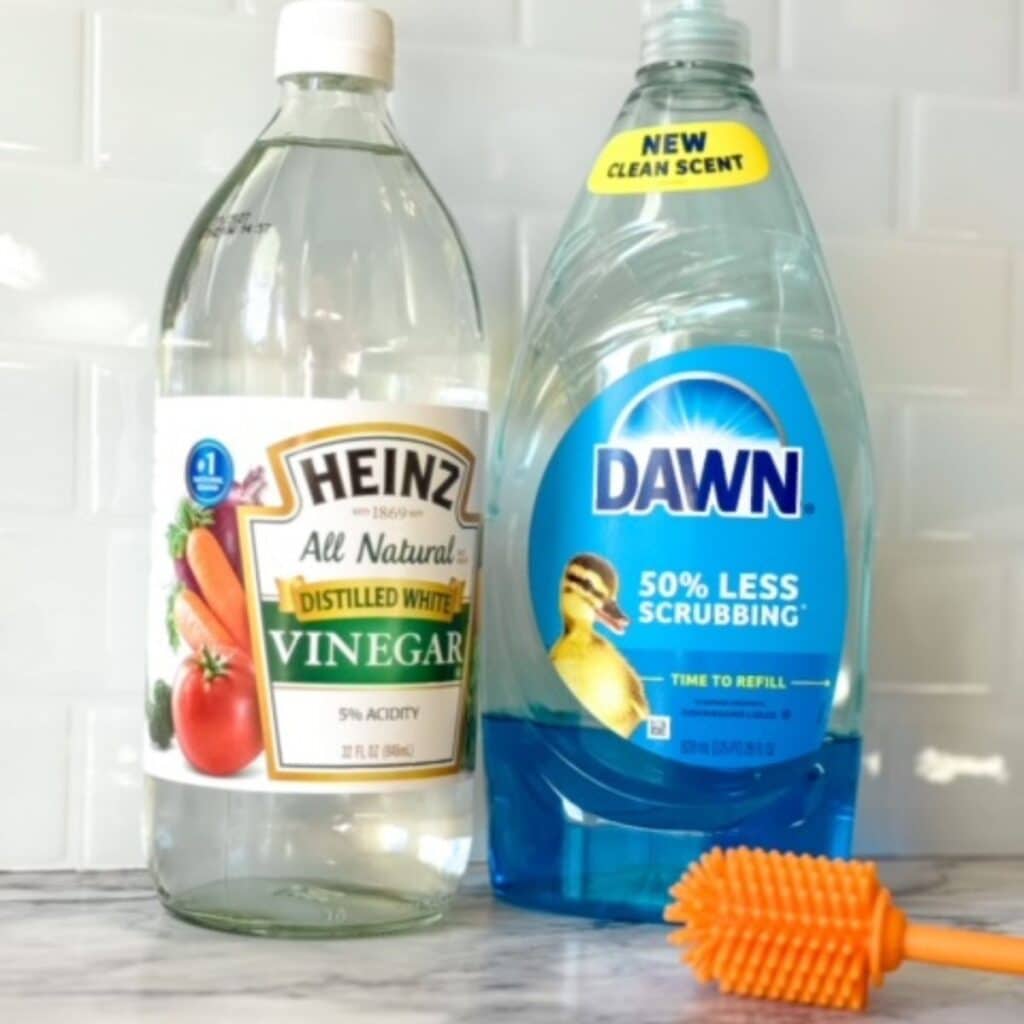
What You'll Need
- White Vinegar - (this does a great job of getting rid of hard water)
- Dish soap - Normally I just use Dawn Dish Soap
- Bottle Brush - so helpful for scrubbing the inside inside of your tea kettle
- Stainless Steel Descaler - (optional) You'll only need this if you find your kettle getting really dirty, very often
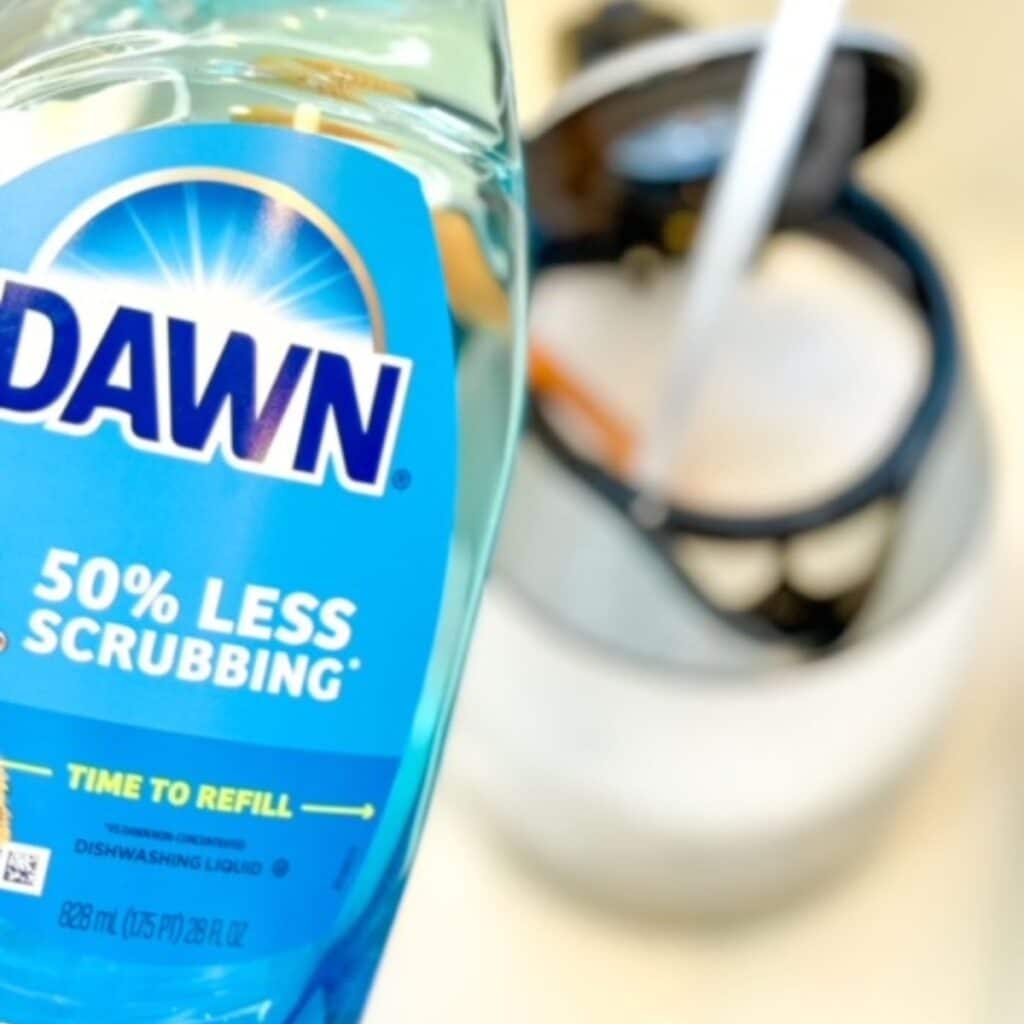
How to Clean and Descale Your Electric Kettle
Cleaning On a Regular Basis
- Add just a little soap to the inside of your kettle. Don't over do it, or else the taste of your tea will be soapy.
- Then pour in 1-2 cups of water.
- Use the bottle brush (or a damp cloth or non-abrasive sponge) to gently clean the inside.
- Dump the kettle and rinse with hot water until all of the soap is gone.
- Dry with a soft cloth and wipe down the exterior of the kettle.
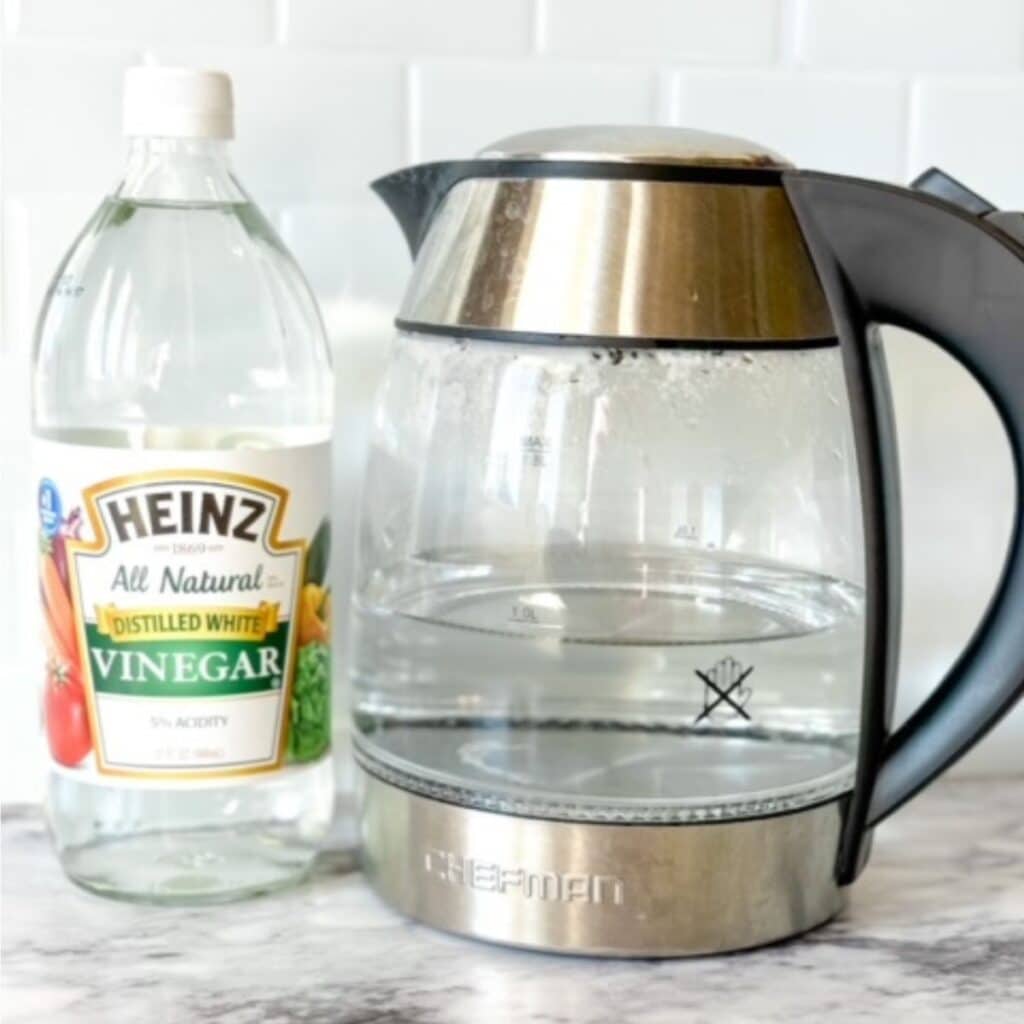
Descaling with Vinegar
- Add 1/2 cup of vinegar to the to the inside of the kettle, along with 1/2 cup of water.
- Turn the kettle on. As the water boils with the vinegar, the will get rid of the mineral build-up.
- Allow it to set for 5-10 minutes until it cools.
- Use the bottle brush to scrub.
- Dump the vinegar mixture our and rinse with clean water.
Sometimes I run one more cycle of water through to make sure the vinegar solution is completely gone.
*If you choose to use a citric acid powder, mix it with fresh water first because adding it to the kettle. If you don't have vinegar or the powder you can also use a tablespoon of lemon juice.
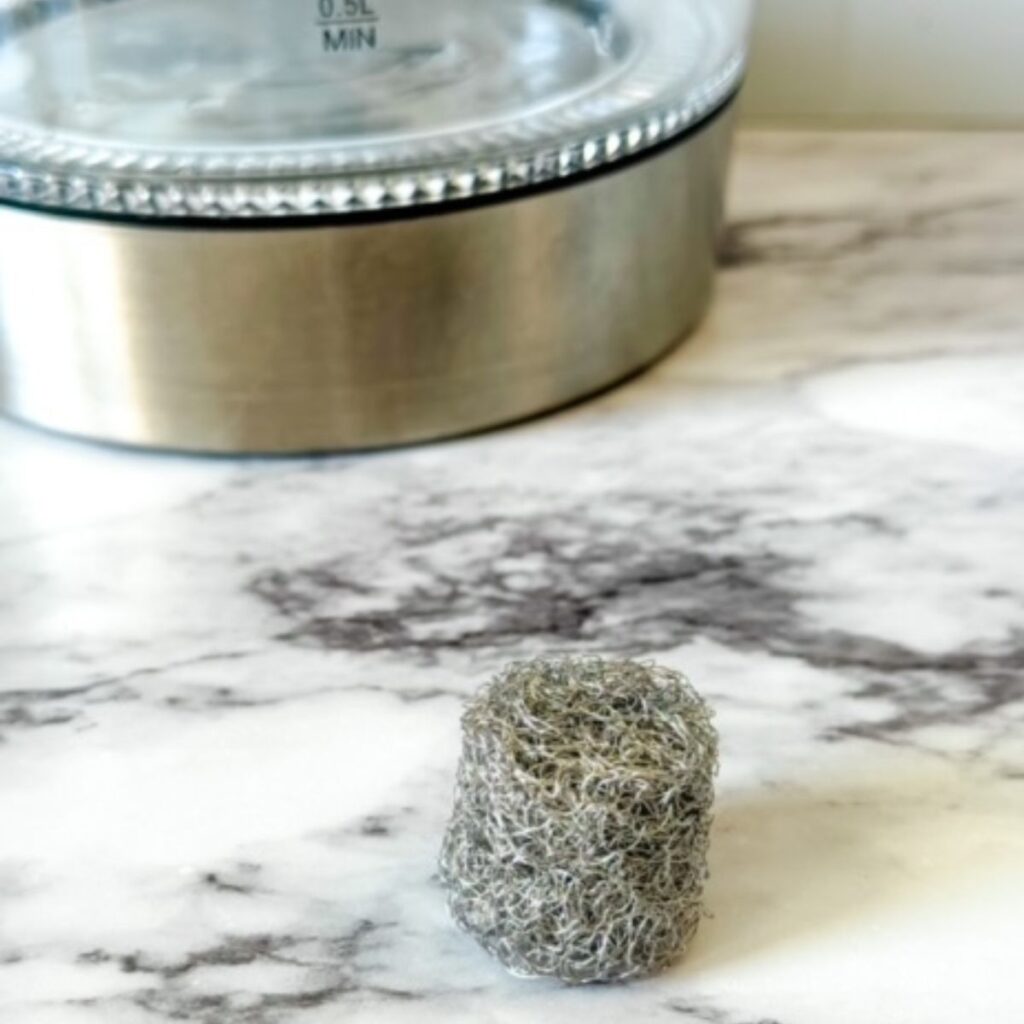
Using A Descaler To Keep It Clean
If you feel like you are constantly descaling your tea kettle then you can use a steel descaler to help keep it clean.
I use a Kettle Kleen sometimes to keep my tea kettle free from mineral deposits. There are different kinds you can get, but this is the one that I use from Amazon.
It's a small piece of stainless steel about the size of a bottle cork. It helps purify the water for a better taste, reduce limescale, and speed up the boil time.
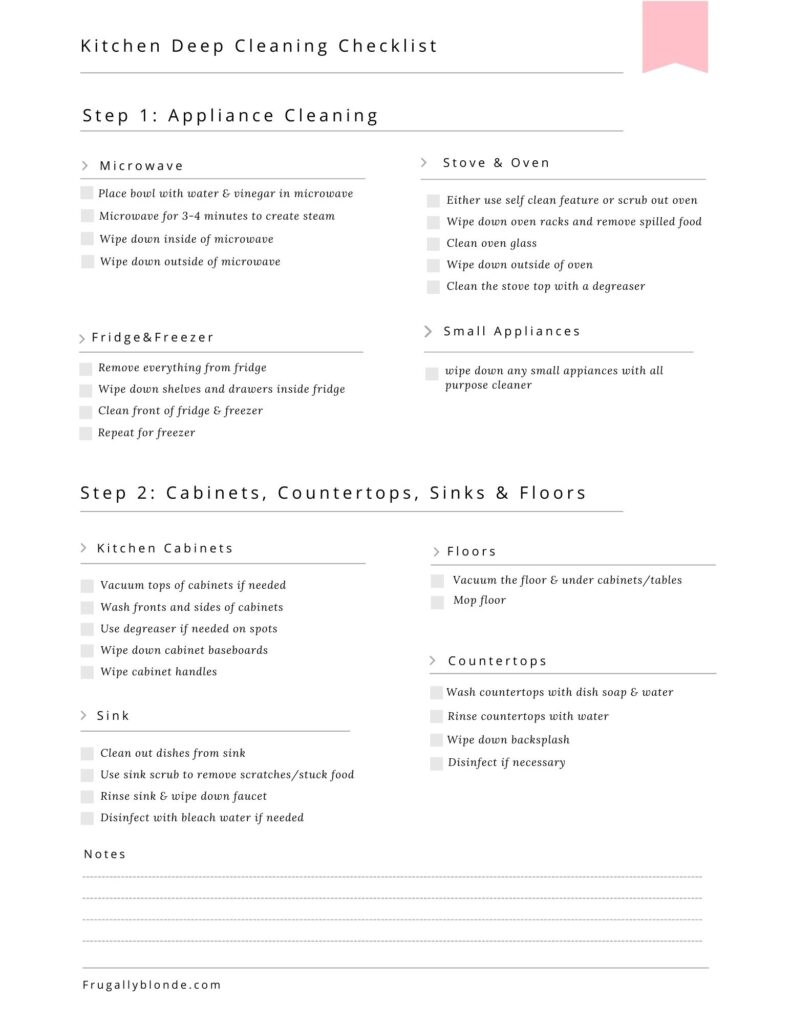
Deep clean your kitchen with this free checklist!
Get your free Kitchen Deep Cleaning printable!
Just drop it in the bottom of your kettle whenever you use it. The limescale and hard water deposits will cling to the Kettle Kleen instead of your tea kettle.
Every once in a while you will want to clean it off. Just run the Kettle Kleen under cold water and gently squeeze it. The deposits will break off and be washed away.

Helpful Tips
- If the outside of your kettle constantly needs wiping down, move it away from the stove. When we cook, there's a lot of splattering happening.
- Regardless of the type of kettle you have, you can use the cleaning and descaling method with a stovetop tea kettle, stainless steel kettle, or a copper kettle.
- Never put an electric kettle in the dishwasher, it can ruin the electrical components.
- When cleaning the inside, if you are using a microfiber cloth or soft sponge, wipe gently so the heating element doesn't get damaged.
- Using filtered water when making tea will also reduce the minerals and chalky deposits building up.
- While chemicals like oven cleaner can be used, I would rather avoid this and use natural ingredients instead.



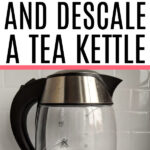
Leave a Reply